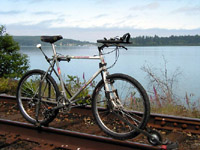The Coos Bay Subdivision of the Central Oregon & Pacific Railroad was originally built by the Southern Pacific. It originally ran from Eugene in the Willamette Valley to just east of Florence on the coast, where it turned south to Reedsport, North Bend, Coquille, Myrtle Point and terminated at Powers. Today the rails stop at Coquille. The area surrounding Coos Bay was once one of the largest lumber producing areas in Oregon. With the decline of the
timber industry many of the mills are gone
and rail traffic has been reduced to just one
train a day.
Because the railroad is active, extreme
caution must by used when riding the line.
Schedules will vary from the official time
tables and it is imperative to check on a daily
basis. Generally, trains run from Eugene to
Cordes (Coos Bay) on Sunday, Tuesday and
Thursday, and return on Monday, Wednesday
and Friday. Normally, there are no trains on
Saturday, but of course, there are exceptions
to all rules and maintenance crews can be
expected any time. Waiting to ride until the
daily train passes is the safest proceedure.
There are many sections of the line which
are virtually isolated. Only a few scattered
farms or cabins may be seen and your only
encounter may be fishermen. Choose your
segment carefully, and be very discreet.
Remember, trespassing is breaking the law.
Proceed at your own risk!

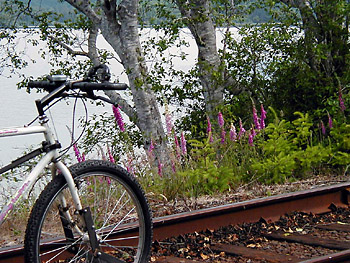
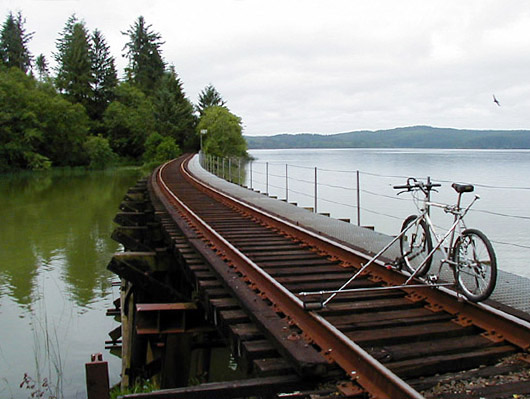
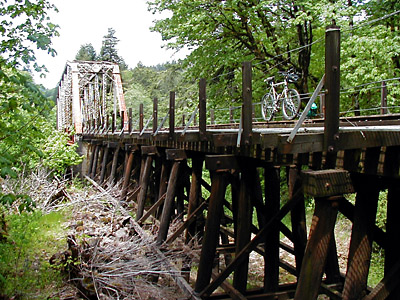
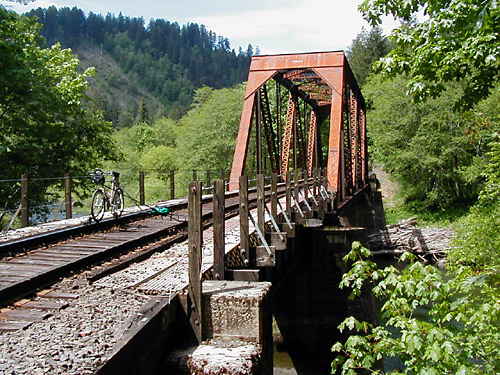
Subdivision
One of the most beautiful lines
in the Pacific Northwest, the Coos Bay Branch crosses mountains,
follows streams, runs along the shores of lakes and salt water inlets, hides itself amidst lush forests and skirts towering
costal sand dunes. There are tunnels, bridges and many long trestles.
by Peter
Coos Bay
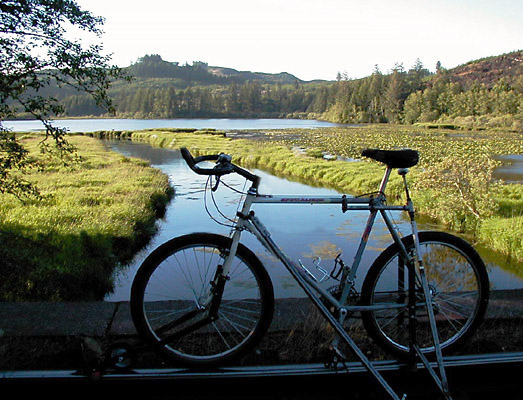
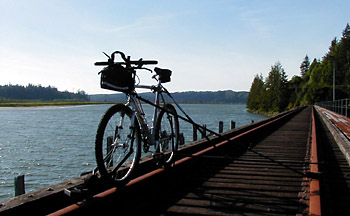
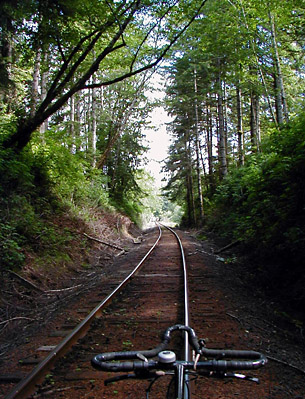
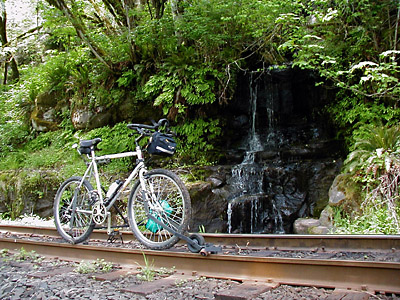
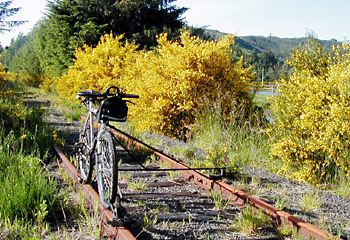
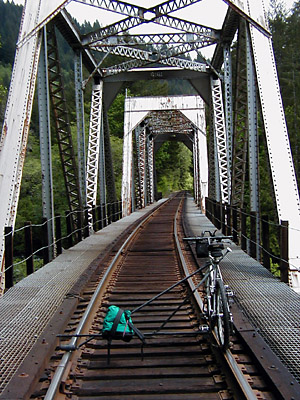
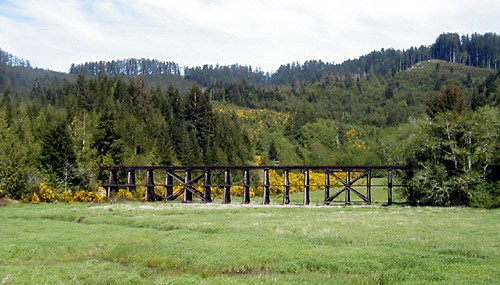
Top: One of the many steel bridges crossing the Siuslaw River between Swiss Home and Richardson along the Old Stage Road between Eugene and Florence. Above: Lilly pads clog one of the inlets along the shores of Siltcoos Lake between Florence and Reedsport. There are nine tunnels on
the line, the longest is 4,184 feet!
Above: Birch and Lupine line the tracks along the shores of Siltcoos Lake. Right: Early morning overcast colors the water a murky green, aided by heavy concentrates of algae in the shallow inlets.
There are numerous trestles along
the many lakes, some so long you
hesitate to start across them.
Not all have walkways
and guard railings.
Right: Most of the bridges crossing the Siuslaw were built between 1906 and 1913. Interestingly, all have their own style and personality.
An abandoned line runs from Gardener Jct. to Gardener just north of Reedsport which served a paper plant.
It was called the
Longview, Portland & Northern Rwy.
The plant has just been demolished (5-26-02) and the rails will probably be removed soon. At right, the LP&N crosses the Smith River which broadens into wide tidal sloughs.
Left: A welcome grotto of cold mountain water cascades into a clear pool next to the roadbed.
Below: Mile after mile of bright yellow Scotch Broom borders the tracks in early Spring on the Longview, Portland & Northern Rwy.
Above: This fairly well maintained bridge is a contrast to most ot the unpainted and rusting crossings.
Right: Deep in a forest of Pine,
Cedar, Cypress, Maple and Birch,
one almost expects to see the "little people".
One of the few wooden trestles that crosses a gap over land, this one is in the South Slough section between
Cushman and Siboco. Again, the Scotch Broom is in full bloom.
Because of the mild costal environment the
country is lush with vegetation. You can be
shivering in a foggy drizzle one moment and
basking in the warm sunshine the next.
Diversity in climate and scenery make this
a very special route.
Click the photo
to visit the
Coos Bay Photo Album
